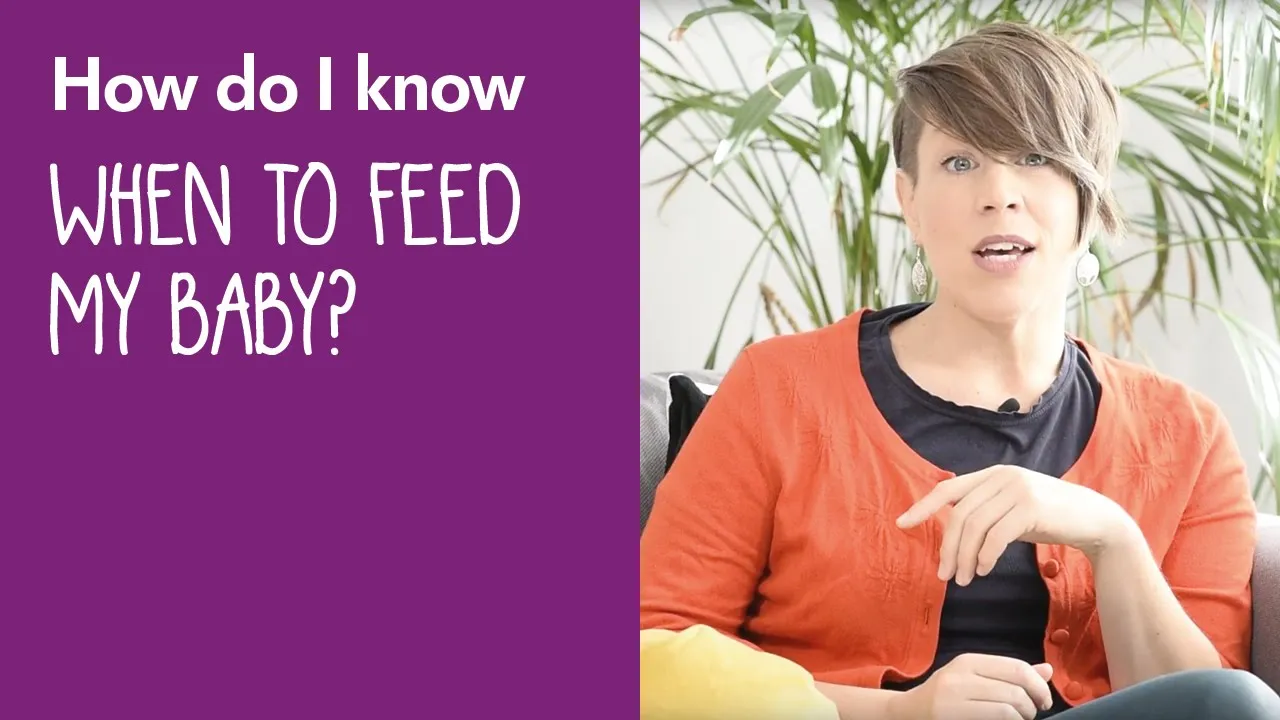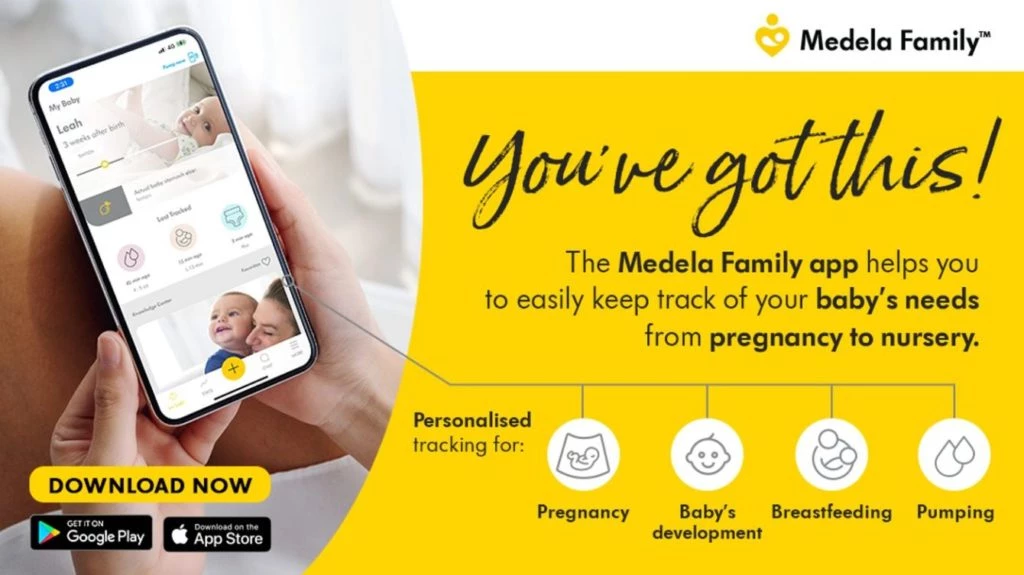The first week with your baby is exciting but can also be daunting – particularly if you’ve never breastfed before. Read our breastfeeding advice to help you get off to the best possible start.
How do I know when to feed my baby?
When should I start breastfeeding my newborn?
It’s best to try to breastfeed your baby in the first hour after birth. By latching on and sucking rhythmically, he begins switching on the cells in your breasts to initiate your milk supply.1 It isn’t known as the ‘magic hour’ for nothing!
“Ideally, your baby will be put on your chest as soon as he’s born to give him access to the breast. He might feed, he might not; but give him the opportunity to do so,” says Cathy Garbin, an internationally renowned lactation consultant.
“Support his body and let him attempt to find his way to your breast and self-attach (you can watch videos of this process, called the ‘breast crawl’, online). However, if your baby doesn’t attach, healthcare professionals are usually very skilled at helping mums with positioning. Baby-led attachment, with mum in a semi-reclined breastfeeding position, is a good way to start.”
So forget about weighing and dressing your baby in that special first hour, or at least until after the first breastfeed. Enjoy relaxed cuddles and plenty of naked skin-to-skin contact with him. This will get oxytocin – ‘the love hormone’ – flowing in both of you, which is essential for the release of your first milk, colostrum.3
“As soon as they were sure our son was healthy, the midwives gave us time as a family – just me, my husband and our new baby – to get to know each other. It was messy, emotional and utterly blissful, and he fed twice in that special hour together,” remembers Ellie, mum of two, UK.
And did you know that as he breastfeeds, your baby is helping you recover from the birth? This is because oxytocin also makes your uterus contract. In the first hours after the birth this helps to expel your placenta naturally and reduces blood loss.4
What if the birth doesn’t go to plan?
If you have a c-section or there are other complications, you may still be able to have skin-to-skin time with your baby and breastfeed in the first few hours.
“If you aren’t able to hold your baby, the next best thing is for him to have skin-to-skin contact with your partner instead. This will help keep your baby feeling safe, loved and warm until you’re ready,” says Cathy.
If your baby is unable to breastfeed, then it’s a good idea to start expressing your milk early and frequently until he is able. “While breastfeeding directly as soon as possible gives mum and baby a good start, it’s not essential,” reassures Cathy. “What’s more important is to initiate your milk supply so you can work towards breastfeeding later if needed.”
You can hand express and use the hospital breast pump to help initiate your milk supply in the beginning.5 The precious colostrum you collect can then be given to your baby. This is especially important if he is premature or poorly, because your breast milk has so many wonderful health benefits.
Don’t feel like breastfeeding is unachievable if your baby arrives early or has medical complications that stop him feeding at the start, either. “I’ve worked with many, many mums where their baby hasn’t breastfed directly from the breast at all in the first six weeks due to a premature arrival or other difficulties, and they’ve gone on to breastfeed successfully,” says Cathy.
Is my baby latching on correctly?
Good attachment is crucial for getting breastfeeding off to a good start,6 as your baby’s latch affects how well he drinks the milk and consequently how he grows and develops. A poor latch can cause sore or damaged nipples, so never worry about asking a healthcare professional to check your attachment, even if you’ve been told the latch is fine and you don’t notice an obvious problem – especially while you’re still at your birth facility.
“Every time I fed in hospital, I buzzed a midwife to check the latch,” says Emma, mum of two, Australia. “There were a few times I thought I had it right but it was painful and the midwife helped take my baby off and do it properly. It meant I had the confidence to do that at home.”
When your baby is latching on, aim your nipple towards the roof of his mouth. This way he will latch on to the nipple, as well as some of the areola beneath it. This means he can draw both the nipple and some breast tissue into his mouth and feed well.6
“The latch should feel pretty comfortable and like a tugging sensation rather than a pain,” says Cathy. “Your baby will have his mouth wide open. His bottom lip may be flanged outwards, but his top lip will rest comfortably on your breast. His body language will show he is comfortable. There’s not going to be a large volume of milk at this early stage, so you won’t see much swallowing, although your baby will be sucking a lot and feeding lots of times.”
How often should a newborn feed?
Breastfeeding frequency and duration can vary a lot in the first week. “The first 24 hours differ considerably from baby to baby. Some babies have a long sleep – birth is tiring! – and some feed frequently,” says Cathy. “This variability is one of the most confusing things for new mums. Everyone gives you different advice, so it’s important to remember each mother and baby are individuals.
“Colostrum is thicker than mature breast milk and produced in smaller amounts, but it’s packed with goodness. Drinking your colostrum gives your baby practice at sucking, swallowing and breathing before your milk comes in in greater quantities,” Cathy explains.
By the time your milk comes in, around days two to four, your baby will probably be nursing eight to 12 times every 24 hours (sometimes more!), including during the night.7 These early feeds can take anywhere from 10 to 15 minutes to 45 minutes to an hour, as your baby is still developing the muscles and coordination he needs to suck efficiently.
“It’s very intense at first – often more intense than you imagined it would be – and that’s what shocks most new mums,” says Cathy. “They can hardly have time to get to the loo, have a shower, get a bite to eat. It’s common to find that a surprise.”
This is something Camilla, mum of one, Australia, experienced: “That first week Frankie fed every two hours, day and night, for between half an hour to an hour at a time,” she says. “My partner and I were both permanently exhausted!”
Do I need a newborn feeding schedule?
The good news is that this frequent feeding helps initiate and build your milk supply.7 So the more your baby feeds, the more milk you’ll make. Therefore you shouldn’t worry about planning a newborn feeding schedule as this may reduce his opportunities to feed. Just concentrate on breastfeeding when your baby gives you hunger cues,8 such as:
- stirring from his sleep
- opening his eyes
- turning his head when he feels something on his cheek
- poking his tongue out
- making cooing noises
- sucking his lips
- trying to eat his hand
- getting grizzly
- starting to whine
- crying
Crying is a late sign of hunger, so if in doubt offer your baby your breast. It can be harder to breastfeed your baby once he has started crying, especially at this early stage when you’re both still learning. As he gets older, he’s likely to feed faster and less often, so breastfeeding should start to feel more manageable.
Will breastfeeding hurt?
You might have been told breastfeeding shouldn’t hurt but, in reality, many mums find the first few days uncomfortable. It’s not surprising when you consider your nipples aren’t used to all that strong, frequent sucking your baby is doing.
“The first couple of days can be uncomfortable as your body and baby get used to breastfeeding. If your baby stays on the breast too long and isn’t attached well, the effect is like wearing a pair of stiff, new shoes,” says Cathy. “Just as you can damage your feet, you can damage your nipples. Preventing damage is better than having to treat it, so see a lactation consultant or breastfeeding specialist if pain continues after the first few days.”
Mariah, mum of one, Canada, agrees: “Though my son’s latch appeared good, he was doing damage while feeding and everything hurt. It turned out a tongue-tie was the culprit, and we received amazing support from our city breastfeeding clinic to diagnose and rectify this.”
You may also feel period-like cramps (known as afterpains) following feeding sessions in the first few days, especially if this isn’t your first baby. This is because the oxytocin released by breastfeeding will help your womb contract further, as it starts to return to its usual size.4
When your milk comes in, it’s usual for breasts to feel full, firm, and certainly bigger than they used to be. Some women find their breasts get very swollen, hard and tender – a condition called engorgement.10 Feeding your baby frequently should help relieve the pressure. Read What is breast engorgement? for more self-care tips.
How often will my newborn poo and wee?
What goes in must come out! Colostrum acts like a laxative that encourages your baby do his first poo, called meconium. This can be a bit startling as it’s black and sticky like tar.11 But don’t worry, his nappies won’t always be like this – in fact, breastfed babies’ poo usually has an inoffensive, slightly sweet smell.
Here’s how many dirty nappies you can expect and when, and what their contents should look like:
Day one
- Number: one or more
- Colour: greenish black
- Texture: sticky and tar-like
Day two
- Number: two or more
- Colour: dark greenish brown
- Texture: becoming less sticky
Day three
- Number: two or more
- Colour: greenish brown to brownish yellow
- Texture: no longer sticky
Day four to one month
- Number: two or more
- Colour: yellow (they must be yellow by the end of day four at the latest)
- Texture: seedy (like English or American mustard with a little wholegrain mixed in). Loose and watery.
When it comes to your baby’s wee, it should be pale yellow. An average newborn has one wee for each day of his life… until about day three, when he should have about three wet nappies daily, and from day five, five or more wet nappies daily. You should also notice these nappies getting heavier over the first few days.11
Is my baby getting enough breast milk?
Because you only produce small amounts of milk at first, you might worry it won’t satisfy your newborn. But if you’re feeding on demand, you should be producing what your baby needs. If you want to keep track, check the number of dirty and wet nappies he’s producing, as shown above. If he isn’t following this pattern, seek medical advice.
“In the first three or four weeks, most babies just feed and sleep. If your baby isn’t settled and wants to feed all the time, think about seeing a healthcare professional,” says Cathy.
Your baby might bring up milk-coloured vomit after a feed, and this isn’t a cause for concern. However, if his vomit has orange, red, green, brown or black in it, or he is projectile vomiting, see a healthcare professional. The same applies if your baby has a high temperature, blood in his poo, a sunken fontanelle (the soft spot on his head), or is not back to his birth weight by two weeks of age.11
But if he doesn’t have any of these signs and is meeting his growth targets, he’s getting enough milk. You’ll both soon get used to breastfeeding and settle down into a more regular pattern.
Read about the next step of your breastfeeding journey in Breastfeeding the first month: What to expect.
References
- Pang WW, Hartmann PE. Initiation of human lactation: secretory differentiation and secretory activation. J Mammary Gland Biol Neoplasia. 2007;12(4):211-221.
- Shashi R et al. Postpartum psychiatric disorders: Early diagnosis and management. Indian J Psychiatry. 2015; 57(Suppl 2):S216–S221.
- Moberg KU, Prime DK. Oxytocin effects in mothers and infants during breastfeeding. Infant. 2013;9(6):201-206.
- Sobhy SI, Mohame NA. The effect of early initiation of breast feeding on the amount of vaginal blood loss during the fourth stage of labor. J Egypt Public Health Assoc. 2004;79(1-2):1-12.
- Meier PP et al. Which breast pump for which mother: an evidence-based approach to individualizing breast pump technology. J Perinatol. 2016;36(7):493.
- Cadwell K. Latching‐On and Suckling of the Healthy Term Neonate: Breastfeeding Assessment. J Midwifery & Women’s Health. 2007;52(6):638-642.
- Kent JC et al. Principles for maintaining or increasing breast milk production. J Obstet, Gynecol, & Neonatal Nurs. 2012;41(1):114-121.
- Australian Breastfeeding Association [Internet]. Feeding cues; 2017 Sep [cited 2018 Feb].
- Jacobs A et al. S3-guidelines for the treatment of inflammatory breast disease during the lactation period. Geburtshilfe Frauenheilkd. 2013;73(12):1202-1208.
- Lawrence RA, Lawrence RM. Breastfeeding: A guide for the medical profession; 2011. 1114 p.





















